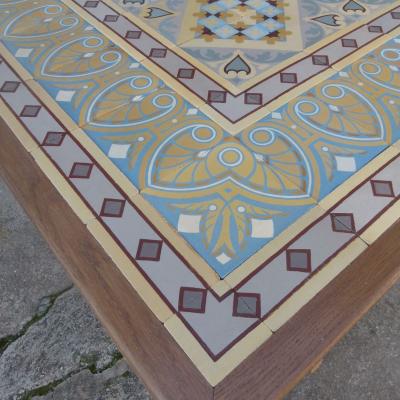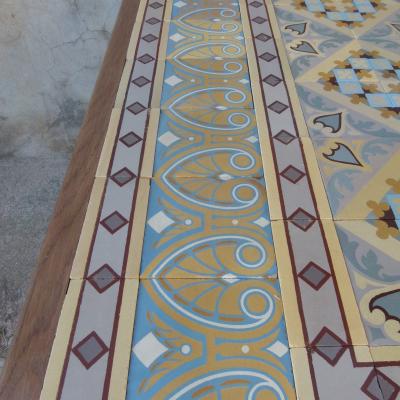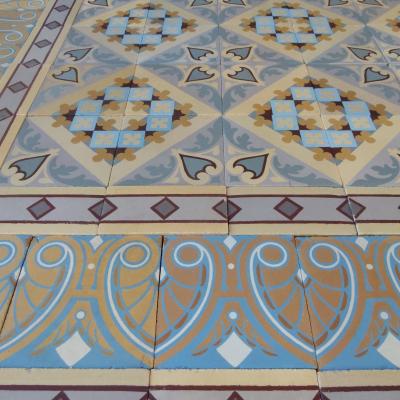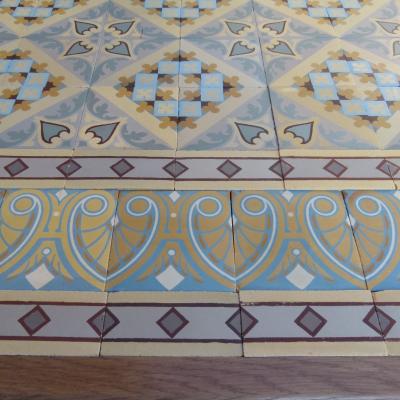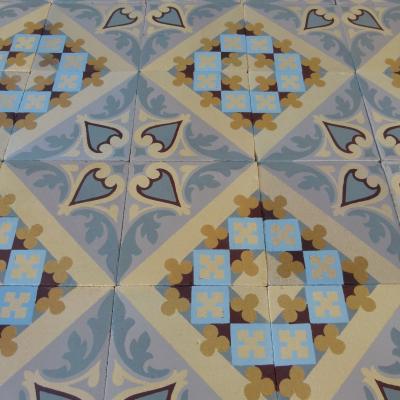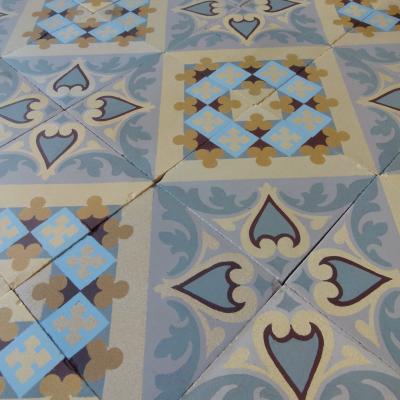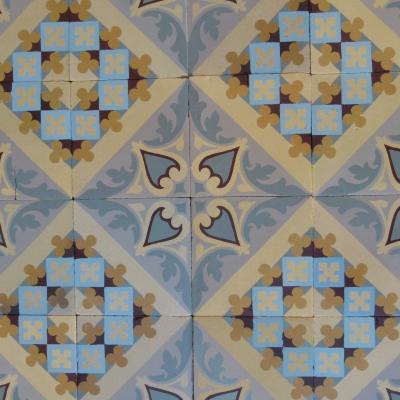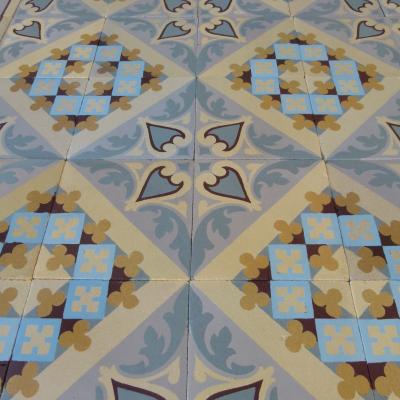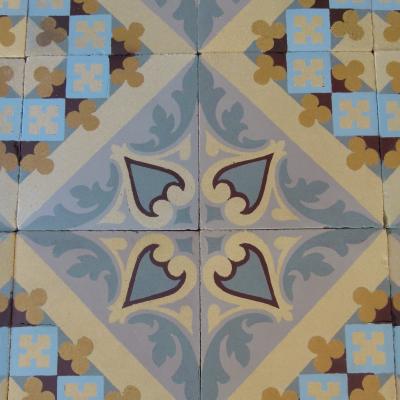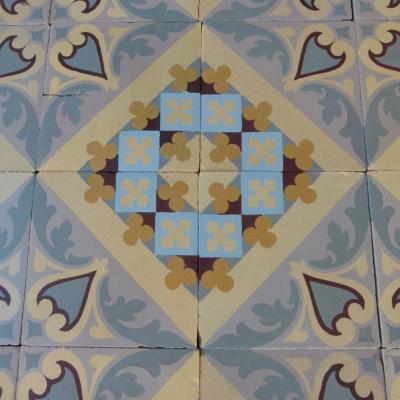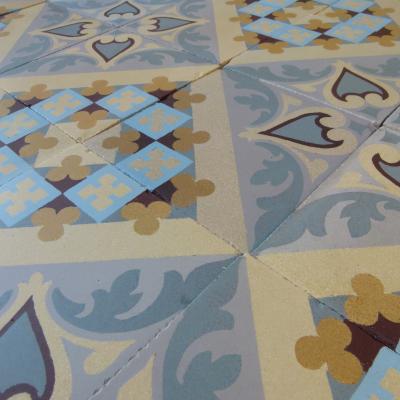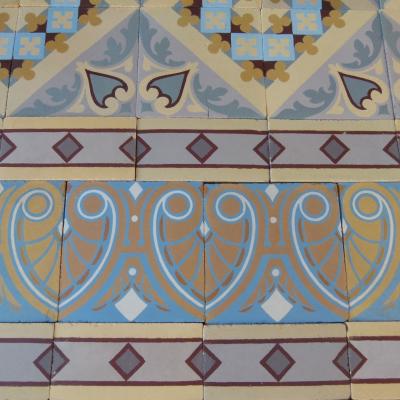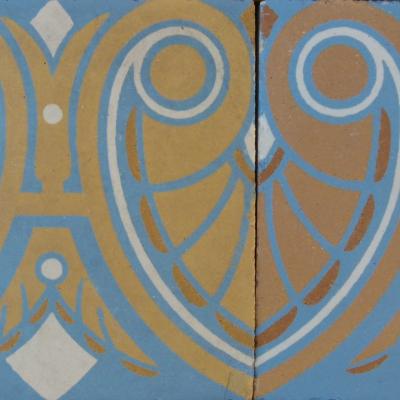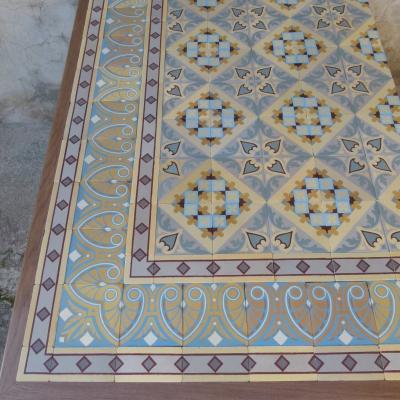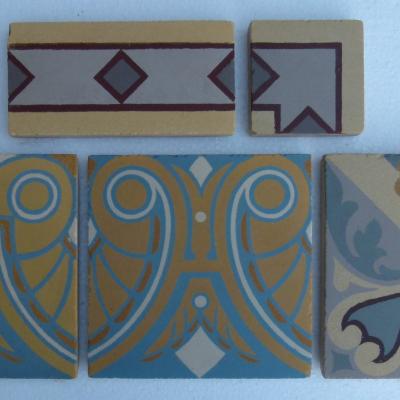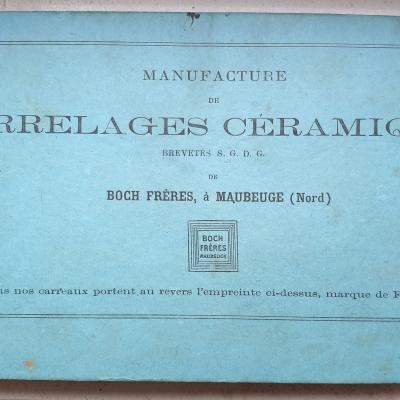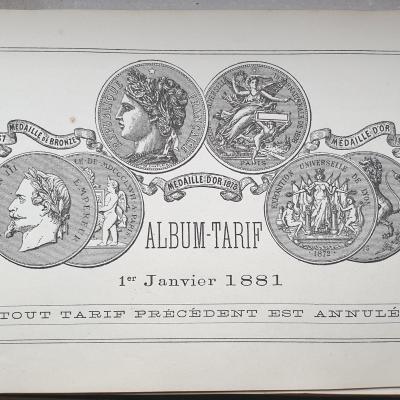A large & rare Boch Freres ceramic floor with triple borders 1881-1900
A large and stunning antique ceramic encaustic floor now fully restored to its original glory and arriving ready to relay.
This 26.4m2 / 285 sq ft. ceramic floor, with its original triple border tile configuration, was manufactured by the multiple award winning Carrelages Ceramiques Boch Freres Maubeuge (NORD), France between 1881 and 1900 and we include in the photo gallery scans from their original catalogue presenting the floor.
The floor comprises of a principal field tile and a same size border, both 17cm / 6.7 inches sq. and a half size border, 17cm x 8.5cm. These quality handmade ceramics weigh over 1.4kgs / 3lbs each.
The slow tile by tile journey to its complete restoration now reveals a beautiful and unique floor, both in design and quality, and we can say with almost total confidence that there will not be another identical floor available globally. There is some tonal variation in the slip of these individually produced tiles, most notably on the large borders, and some tiles display small chips and edge nibbles, all groutable. The high resolution photographs in the gallery are of a randomly selected section that is representative of the whole floor.
Robust and resistant to high summer or sub-zero winter temperatures the tiles can be laid inside or outside of the home.
Tile quantities, give or take one or two:-
FIELD TILES – 729 tiles – 21m2 / 227 sq ft
LARGE BORDERS - 89 tiles plus 2 corners – 2.7m2 / 28.3 sq ft. – 15.5 linear metres / 50.8 linear ft.
SMALL BORDERS - 180 tiles plus 8 corners – 2.7m2 / 28.3 sq ft. – 31.3 linear metres / 102.7 linear ft.
NOTE
Antique tiles were most commonly made in single or two tile moulds. Before current computer automation methods their moulds were made by hand and the colour slips mixed by eye. Kiln temperatures could also be variable, as could the firing time. The result is that often tiles display subtle size and thickness variations and there can be tonal variations in colours, owing to the slip mixing and/or firing time. All of this makes these handmade tiles unique and adds to their charm. Some floors display their subtle variations in size and tones, some not, but when photographing we always take a random section of the floor so that it is representative of the whole. A tiler should always dry lay a section of the tiles to familiarise himself with them before starting to fix lay.
CE314



